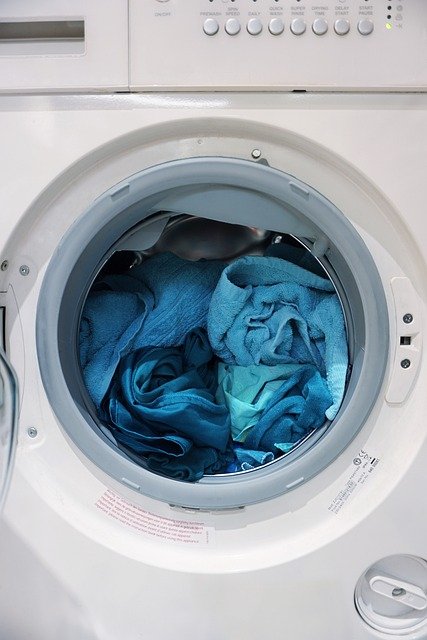Need a New Washing Machine? Important Things to Know Before You Buy
Replacing a washing machine isn’t something most of us do often but when the time comes, it pays to make an informed choice. From understanding the types of machines available to knowing which features truly matter for your daily routine, this guide will help you navigate your options with confidence. Whether your old washer is giving up or you’re just ready for an upgrade, here’s what you should consider before making a purchase.

What are the main types of washing machines available?
The washing machine market offers several distinct types, each with unique advantages. Top-loading machines remain popular for their affordability and ease of use, allowing you to add clothes mid-cycle and typically completing wash cycles faster. Front-loading washers excel in efficiency, using less water and energy while providing superior cleaning performance through their tumbling action. High-efficiency top-loaders bridge the gap, offering water savings without the bending required for front-loaders. Compact or portable units serve small spaces or temporary living situations, while washer-dryer combinations maximize space efficiency in cramped quarters.
What useful features should you look for in a washing machine?
Modern washing machines come packed with features that can significantly improve your laundry experience. Variable water temperature settings allow you to optimize cleaning for different fabric types, while multiple spin speeds help protect delicate items. Programmable cycles for specific fabrics like wool, silk, or athletic wear ensure proper care. Steam cleaning capabilities reduce wrinkles and sanitize clothes without harsh chemicals. Smart connectivity lets you monitor wash progress remotely and receive maintenance alerts. Automatic load sensing adjusts water levels based on laundry volume, preventing waste while ensuring thorough cleaning.
How important are energy and water efficiency ratings?
Energy and water efficiency ratings directly impact both your utility bills and environmental footprint. ENERGY STAR certified washers use approximately 25% less energy and 33% less water than standard models. Over a machine’s typical 11-year lifespan, these savings can amount to hundreds of dollars in reduced utility costs. Water efficiency becomes particularly crucial in areas with water restrictions or high water costs. Look for machines with high Modified Energy Factor ratings and low Water Factor ratings. While efficient models may cost more upfront, the long-term savings often justify the initial investment.
When is it time to replace your current washing machine?
Several clear indicators suggest it’s time for a new washing machine. Frequent repairs that cost more than half the machine’s current value signal replacement time. Clothes coming out dirtier than they went in, despite proper detergent use, indicates declining wash performance. Excessive noise, vibration, or water leakage suggests internal component failure. Age plays a significant role too – machines over 10 years old typically lack modern efficiency features and may become increasingly unreliable. Rising utility bills might reflect decreased efficiency in aging washers.
How can you choose a washing machine based on your lifestyle?
Large families benefit from high-capacity machines that can handle bulky items like comforters and multiple loads efficiently. Busy professionals might prioritize quick-wash cycles and smart features that provide remote monitoring. Apartment dwellers need compact models or stackable units that maximize limited space. Households with young children should consider machines with sanitizing cycles and child safety locks. Environmentally conscious consumers might prioritize ENERGY STAR ratings and water-saving features. Those with mobility issues often prefer top-loading models to avoid bending, while people dealing with allergies might benefit from steam-cleaning capabilities.
Real-World Pricing and Popular Models Comparison
Understanding washing machine pricing helps you budget effectively and identify the best value for your needs. Entry-level top-loaders typically start around $400-600, while premium front-loaders can exceed $1,200. Mid-range options often provide the best balance of features and value.
| Model Type | Brand Example | Capacity | Price Range | Key Features |
|---|---|---|---|---|
| Basic Top-Loader | Whirlpool WTW4816FW | 3.5 cu ft | $450-550 | Multiple cycles, automatic load sensing |
| High-Efficiency Top-Loader | LG WT7300CW | 5.0 cu ft | $700-850 | Steam cleaning, smart connectivity |
| Front-Loader | Samsung WF45R6100AW | 4.5 cu ft | $650-800 | ENERGY STAR, steam sanitize |
| Premium Front-Loader | LG WM4000HWA | 4.5 cu ft | $900-1,200 | TurboWash, AI fabric detection |
| Compact Unit | GE GNW128PSMWW | 2.8 cu ft | $550-650 | Space-saving, portable options |
Prices, rates, or cost estimates mentioned in this article are based on the latest available information but may change over time. Independent research is advised before making financial decisions.
Conclusion
Selecting the right washing machine involves balancing your specific needs, available space, and budget constraints. Consider your household size, laundry habits, and desired features while keeping long-term operating costs in mind. Energy-efficient models may require higher upfront investment but typically provide significant savings over time. Take advantage of local retailers’ delivery and installation services, and don’t forget to factor in any necessary electrical or plumbing modifications. With careful consideration of these factors, your new washing machine will serve your household reliably for years to come.




